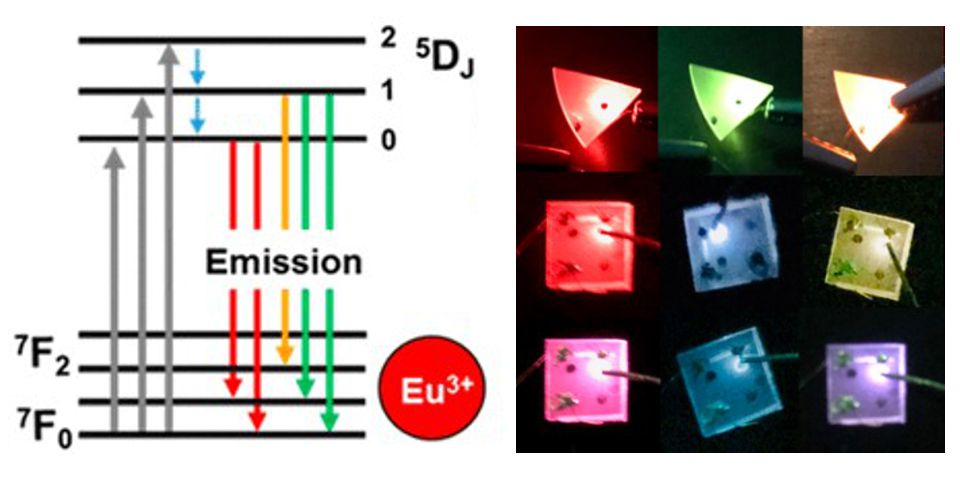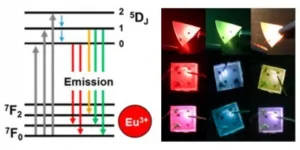An international team of researchers headed by Volkmar Dierolf of the Department of Physics at Lehigh University (Bethlehem, PA) is developing a new method for tuning the color of the light emitted by LEDs. The tuning is accomplished by a combination of doping and changing how current is applied to the device.

A recent article by the team is entitled “Color-Tunablility in GaN LEDs Based on Atomic Emission Manipulation under Current Injection.” It was published on April 17, 2019 in ACS Photonics, Article ASAP. A copy of the article is available for purchased and can be found here.
In the current generation of LED displays, it is common for a pixel to be composed of red, green, blue (and, possibly, other) LED sub-pixels arranged in close physically proximity. The light output by the sub-pixels mixes together making it possible for each pixel to produce light with a color that can extend over a wide color spectrum.
Although this sub-pixel approach is effective, there remains a considerable incentive to develop a single color tunable LED pixel. One of the several incentives is that doing so should allow for the design of a display with a higher pixel density.
As background information included in their article, the researchers explain that a key problem with the materials used in previous investigations into single color tunable LEDs was that they did not allow for easy integration with current LED technology. Therefore, one of the goals of their current research was to develop a means of color tuning that is compatible with the type of materials used in LEDs that are commercially important. More specifically, with GaN-based LEDs.
In their recent work, the researchers demonstrated that it was possible to attain red, green and blue emissions from a single GaN LED structure when the material was doped with the rare earth ion europium. Europium emits in the red portion of the spectrum. In its trivalent form, however, it is also possible to produce two other emission wavelengths if additional excited states are exploited.
“Using intentional co-doping and energy-transfer engineering, the researchers demonstrated that all three primary colors can emit due to emission originating from two different excited states of the same Eu3+ ion (~620 nm and ~545 nm) mixed with near band edge emission from GaN centered at ~430 nm.”
The intensity ratios of the light emitted by these transitions can be controlled by choosing the current injection conditions. The conditions referred to include injection current density and duty cycle under pulsed current injection.
The left hand portion of the figure below illustrates possible transitions when europium doping is present. The right hand portion of the figure illustrates light emission from each transition as a function of current injection conditions.
 Left: possible transitions in the europium doped material. Right: Top row: light emitted from a GaN:Eu LED. Tuning from red to yellow is due to red and green light mixing from different Eu states. Right: Middle and bottom rows: a GaN:Eu LED to which Si/Mg was included adding emission of blue light. Each picture on the right was photographed under a different current injection/filtering condition.
Left: possible transitions in the europium doped material. Right: Top row: light emitted from a GaN:Eu LED. Tuning from red to yellow is due to red and green light mixing from different Eu states. Right: Middle and bottom rows: a GaN:Eu LED to which Si/Mg was included adding emission of blue light. Each picture on the right was photographed under a different current injection/filtering condition.
The principle result reported by the team is that it is possible to achieve color-tunability in a single GaN-based LED through the manipulation of the emission properties of an atomic-type dopant. The researchers go on to explain that this result is not limited to just GaN:Eu-based systems but, rather, is more general. The article concludes with the statement that the “new approach could open up a whole new field of tunable emission of colors from a single dopant in semiconductors, which can be reached by simple injection current tuning.” -Arthur Berman
Lehigh University, Volkmar Dierolf, 610-758-3915, [email protected]

